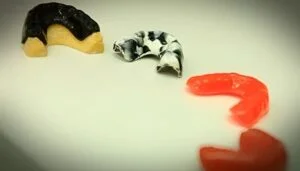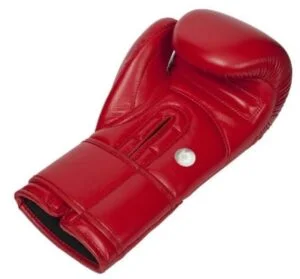In the article “Boxing” we will tell about the sport of the brave and strong, its brief history and rules. You will also learn why boxing gloves soften the blow.
#Boxing #ProBoxing #AboutBoxing #SummerSports
No one can give even an approximate date of the first fist fight. This is understandable, because this sport did not require sophisticated equipment.
Egyptian frescoes dating back to the 4th millennium B.C. depict fighters fighting a fist fight. The fighters already wore wide leather bands on their hands, the prototype of today’s gloves.

It was the same kind of winding that ancient Greek athletes wore on their fists. It was a three-meter strap made of bull skin. In those ancient times fights were tough, the opponents made their blows heavier by clamping metal and stone balls in their hands. Of course, physical injuries were also common, and there were essentially no rules of engagement.
The rules came to fist fights during the Ancient Greek Olympic Games. Injuries to athletes were strictly forbidden. The competitors trained for a long time before the competition.
Modern boxing originated in England, in the early 18th century. And since many countries have their own kinds of this sport, you can hear that classical boxing is called “English”. Boxing was included in the Olympic program already in 1904.

The names of professional Russian boxing medalists are known to everyone. They are Konstantin Tszyu, absolute world champion in the first welterweight division, and Alexander Povetkin, who competed in the heavyweight division. And, of course, the legendary super heavyweight Nikolay Valuev.
It’s no coincidence that we mentioned that our famous athletes are professionals. The fact is that there are two types of boxing: amateur fights and professional fights. The basic rules in both areas are similar.
Each boxer has his own corner, where he has a rest between rounds. The fight is judged by the judge in the ring, the referee.
In both sports, hitting below the belt, holding each other, pushing, biting and wrestling are prohibited. Punches may only be delivered with a clenched fist. Punches to the back, to the kidneys and to the back of the head and neck are prohibited. These rules help to minimize injuries, but there are some differences in the rules of amateur and professional boxing.
Amateur boxing lasts 3 or 4 rounds and the winner is determined by the number of points given for hits to the body and face of the opponent. It is amateur boxing that is included in the Olympic Games program.
If Olympic boxing is a sport with regular training camps and championships, then professional boxing is a job, and every fight is a show on which viewers place their bets. A pro boxer can afford to compete once every 12 months, while an Olympic champion has to fight at least 40 times a year for his or her spot. That’s why the main priority of Olympic boxing is not entertainment, but safety. Hence the difference in equipment. Similar in appearance but different in essence, the gloves, the Olympians’ shirts and the lack of them in commercial fights.

A lifeline in the ruthless professional ring is a mouth guard, a silicone vest for an athlete’s teeth. A mouth guard is a cushioning device between the lower jaw and the skull that protects the athlete’s teeth. If a collision between the fist and the chin cannot be avoided, the mouth guard absorbs 40% of the impact energy.
Today the mouth guard is not only a boxer’s protection, but also his secret weapon, because it can increase the athlete’s strength by 30%. We are talking about a neuromuscular mouth guard, which is made individually for each athlete.
The neuromuscular cap contains information about the position of the athlete’s jaw, at which all muscles are relaxed. Putting on the mouth guard, the athlete automatically starts the “jaw muscle relaxation” mode, which helps to avoid reflex overstrain of the muscles of the back and neck.
Professional fights can last from 10 to 12 rounds. In professional boxing the referee, referees, seconds and even the fighter himself can stop the fight because of an injury that prevents the continuation of the fight. In this case, the injured fighter is considered to have been defeated by a technical knockout.
In addition to technical knockout, the fight can also end with a regular knockout, which counts if the boxer who missed the punch is unable to continue the fight after the ref finishes counting to 10.

Boxer’s stances and punches have their own names. Hook – a side kick during a fight at close or middle distance. Cross – a straight punch. Uppercut – a punch in a close fight. A jab is a long straight punch. And also swing, punch, overhand, and these are just the main punches, far from exhausting all the ways of fighting.
In addition, during the fight the athlete forms a sequence of strikes in a bundle, and the task of the defender in time to understand what series of blows the opponent has planned to hold, and to develop the tactics of defense and counterattack. And all these actions happen in a matter of seconds.
The richness of techniques and methods of defense has led to the formation of many styles of fighting in boxing. These styles are distinguished by the tempo, the chosen distance, the sequence of blows in combinations, and much more.
Boxers rarely stick to any one style, as this can make them too predictable to their opponents. Athletes mix styles, improvise, and try to take their opponents by surprise. They need to figure out their opponent’s plans in a split second and develop their own counterattack strategy, which requires experience and knowledge, which is why boxers spare no time in preparing for competitions.
One interesting way to train athletes is shadow boxing. A boxer fights an imaginary opponent. In a shadow fight, an athlete must visualize the fight in detail, see the opponent in front of him or her, and throw all the punches as if they were in a real fight.
In this fight, athletes do not just pound the air with their fists, but approach the matter with the utmost seriousness. This technique is used by almost all famous boxers, and some paid a lot of attention to the fight with a ghost opponent. Among them, for example, was the great fighter Muhammad Ali. In shadow boxing, a boxer can afford to work without gloves, because in reality there is no opponent, but in a real fight gloves are necessary.

At first glance, it would seem that the huge gloves on a boxer’s hand make his punches crushing, because they are heavy. In fact, the opposite is true. Thanks to the gloves, the punch is more gentle and less traumatic. There are several reasons for that, but we will name the two most important.
The first is the contact area between the gloves and the obstacles, it is much larger than the corresponding area of the fist. The force of the impact is distributed over the entire area relatively evenly, creating a certain pressure.
The corresponding physical formula looks like this:
Pressure is equal to the force divided by the surface area. P = F/S (P – pressure, F – force, S – area). It is clear that the larger the area, the less pressure and therefore less deformation of the part of the athlete’s body on which the impact is made.
Second. The force of the impact of the glove is also lower than that of a fist blow. The glove is squeezed during the impact, gradually slowing down the impact, resulting in a much lower force. This is all a consequence of Isaac Newton’s second law, which states that force is equal to the mass of the body multiplied by its acceleration.
The strength of an extra-class boxer can reach 1000 kilograms and the number of blows during the fight counts in dozens, and each opponent can pay with his health to miss such a blow. That’s why gloves are not a boxer’s weapon, but a safety cushion for his enemy.

All boxing gloves are made of high quality genuine leather. According to the rules of the International Federation, leather substitutes have no place in the ring. Natural leather, as an elastic fabric, stretches along the frame of the glove without leaving folds, but a leather substitute on the contrary. Each such crease can give you an extra abrasion on your opponent’s face, and the life of the leatherette will be much shorter.
But it’s not the cover that counts, it’s the content. A couple of decades ago, boxing mittens were filled with pressed horsehair for stiffness. Over time, it would bunch up, and the athlete would strike with practically his bare hand.
Today there is a voluminous polypropylene skeleton inside the skin cover that is deliberately laced with heavy-duty lavsan threads. That’s exactly the kind of filler that slows the impact we wrote about above.

In addition, a special roller, or as it is called, supinator is sewn into the glove, which does not allow the athlete to fully clench his fist, thereby making it harder for the boxer to knock out his opponent. The thickness of the suppinator is only 8mm, but it reduces the force of the blow by 2 times.
But no appliance can replace the fighting skills that can be obtained under the guidance of an experienced coach. Probably there is no city in our country that does not have a boxing section.
Most of them are attended by boys, but recently girls are trying to keep up. As a rule, the boxing section accepts all comers from 10 years old who have no health contraindications. If the coach asks you a doctor’s note, do not be surprised, but it’s better to be prepared in advance.
For classes need comfortable clothes and shoes. To buy a helmet, gloves, and stylish boxing shorts with a T-shirt can be done later when you already have some skills and confidence that you want to practice boxing in the future.
There is one more small detail, if you are going to enroll in the boxing section, be sure to learn how to jump rope. Exercise with a jump rope allows you to develop the lightness and mobility you need to dodge punches. This exercise is part of every professional boxer’s training program. All in all, get your strength up, tune in to win, and go for it!
About Boxing
FAQs
What is boxing?
Boxing is a martial art in which an athlete wearing special gloves strikes an opponent with clenched fists. The second name of this sport is "fist fighting". In amateur boxing the fight lasts 3 or 4 rounds, and in professional fights from 10 to 12.
How many boxing associations are there?
Organizations in boxing appear every year, now there are more than 60 sanctioning bodies in the world. The most authoritative of them are: WBA (World Boxing Association), WBC (World Boxing Council), WBO (World Boxing Organization) and IBF (International Boxing Federation).
Why are there weight categories in boxing?
Weight categories in boxing were invented for two reasons: 1) To popularize the sport, as it expands the number of fighters who can compete. Previously, only abnormally strong or oversized athletes competed in fights; 2) For the fairness of the evaluation of bouts, since heavyweights had a clear advantage over lightweights.









